Command LIVE #7 released: Black Gold Blitz!
Available now through Matrix Games and Steam.
Shifting Sands is released!
Available at MatrixGames and Steam !
The scenarios of Shifting Sands: Part 1 – Part 2 – Part 3
Companion to Shifting Sands: Command v1.13 update
The Scenarios of Shifting Sands–Part 3: Mansoura, Fifth Eskadra, Osirak and Bekaa
Shifting Sands is being released tomorrow, together with the new v1.13 game update. Part 1 of this series covered the period from the sidelines of the Suez Crisis up to the Six-Day War, and Part 2 addressed the War of Attrition and the start of the Yom Kippur War. Now we conclude the series with the later stages of the October conflict, and the raids on Osirak and the Bekaa Valley.
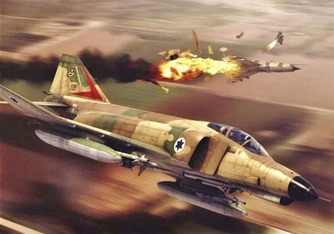 14. "Bogies Like Fireflies"
14. "Bogies Like Fireflies"
Israel vs. Egypt
Date/Time: 14th October, 1973 / 12:30:00 Zulu
Location: Egypt – Nile Delta
Duration: 4 Hours
Playable Sides: Israel
Over the course of the Yom Kippur War, Israel launched repeated attacks against the airfields at el-Mansourah, Tanta and Salihiyah. In fact, attempts had been made to attack el-Mansourah on October 7, 9, and 12, but each had failed to breach the EAF’s tough resistance as well as fearsome anti-aircraft gun and missile fire. In the aftermath of the disastrous Six-Day War, when the EAF lost almost all its aircraft on the ground to Israel’s preemptive strike, the Egyptians had constructed around 500 concrete shelters on 20 major airbases to prevent their aircraft from being destroyed on the ground in a future conflict.
The fourth and final Israeli assault on October 14 was to be the most determined, using large numbers of F-4 Phantoms and A-4 Skyhawks (many of them freshly delivered from the US) attempting to hit the huge airbase at el-Mansourah. The Israeli aircraft were spotted approaching from the Mediterranean Sea; The EAF’s 104th Air Wing immediately scrambled its fighters, while signaling for and receiving additional reinforcements from other nearby airbases.
The resulting massive air battle culminated in an almost continuous dogfight lasting no less than 53 minutes. According to Egyptian estimates, well over 120 Israeli aircraft were involved at one time facing at least 62 Egyptian MiGs. Military observers expecting a re-run of Israel’s 1967 lopsided triumph were in for a rude shock.
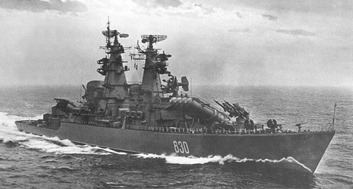 15. Fifth Eskadra
15. Fifth Eskadra
Date/Time: 24th October, 1973 / 07:30:00 Zulu
Location: Eastern Mediterranean Sea
Playable Sides: Fifth Eskadra
Duration: 8 Hours
Since the mid-1960s, Soviet naval forces were increasingly deployed abroad. In 1964 the Mediterranean squadron (aka "Fifth Eskadra") became the first forward-deployed Soviet naval force.
By 1966 the Soviets had built up their Mediterranean force to an average strength of fifteen ships, which were making port calls from Egypt to Gibraltar. This Soviet deployment in the eastern Mediterranean was initially intended to counter the American deployment of strategic cruise- and ballistic-missile submarines there. As American missiles improved in range and accuracy, the Soviets were necessarily drawn into blue water operations to hunt and destroy the boats carrying them.
The first significant statement of Soviet sea power in the Mediterranean came in 1967 during the Arab-Israeli conflict. During the Six-Day War on June 1967 the Soviets increased their force in a show of support for the Arab states. That was the first opportunity taken by the Soviets to demonstrate their willingness to influence major events in the area by the use of naval power. During that crisis, the Soviet Mediterranean Squadron numbered up to some 70 units, some of which were stationed in Port Said and Alexandria, to prevent Israeli attacks against those ports.
This Soviet presence rapidly expanded, and by 1970, the Eskadra steadily maintained 70 vessels in the eastern Mediterranean, with logistical support coming from the Black Sea and additional units regularly "cross-attached" from the Northern and Baltic fleets. During the Yom Kippur War (October 1973) the force rose from 52 to 95 ships (including over a dozen destroyers and nearly two dozen submarines), outnumbering the American 6th Fleet.
This time, the Soviets were prepared to commit significant assets and resources to assist their Arab allies’ objectives. But how far were they really willing to go?
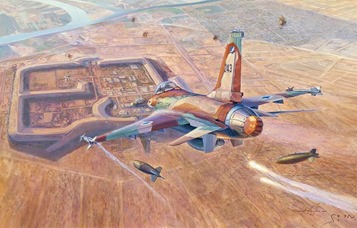 16. Operation Opera
16. Operation Opera
Israel vs. Iraq
Date/Time: 7th June, 1981 / 16:00:00 Zulu
Location: Iraq – Baghdad
Duration: 6 Hours
Playable Sides: Israel
In 1976, Iraq purchased an Osiris-type nuclear reactor from France. While Iraq and France maintained that the reactor, named Osirak by the French, was intended for peaceful scientific research, the Israeli government viewed the reactor with suspicion, and repeatedly claimed that it was designed to produce weapons-grade plutonium.
Iran shared Israel’s concern and actually attacked the reactor on September 1980 while it was still under constructions (operation "Scorch Sword"), damaging it slightly. The damage was subsequently repaired by French engineers and the countdown to operational commencement resumed.
Israeli preparations for striking the reactor started as early as 1976, with PM Begin authorizing the constructions of a full-scale target model of the reactor which Israeli pilots could then practice attacking. Three pilots died in accidents while training for the mission.
Israel reportedly conducted a series of clandestine operations to halt construction or destroy the reactor. For example, in April 1979 Mossad agents in France allegedly planted a bomb that destroyed the reactor’s first set of core structures while they were awaiting shipment to Iraq. In June 1980, _someone_ assassinated Yehia El-Mashad, an Egyptian atomic scientist working on the Iraqi nuclear program. It has also been claimed that Mossad bombed several of the French and Italian companies it suspected of working on the project, and sent threatening letters to top officials and technicians. Following the April 1979 bombing, France inserted a clause in its agreement with Iraq dictating that French personnel would have to supervise the Osirak reactor on-site for a period of ten years.
The window of opportunity for a disabling strike on the reactor began closing rapidly. Osirak was estimated to "go critical" on June/July 1981; once this happened, any major damage on the reactor circulation piping & infrastructure was likely to cause a catastrophic explosion and widespread contamination similar to the Chernobyl accident in 1986 (anecdotally, a US official counseled his Israeli counterpart: "if you’re going to bomb that thing after it goes live, you may as well drop a nuke on it; the fallout will be about the same").
Final plans for the strike, codenamed Operation Opera, were laid out in the first months of 1981. Eight brand-new F-16As would deliver 2 Mk84 bombs each, while six F-15As would provide air cover. The Eagles would fly a high CAP profile and had no problem with the range, but the Falcons had to fly their ingress at low altitude and follow a near-impossible profile fuel-wise. The F-16s were stripped of every possible non-essential weight to make their flight as efficient as possible; even so, it was considered likely that they would have to land on divert fields on the return leg.
Opera would have only one shot at Osirak. Iraq had already increased the defences and alert levels in the reactor vicinity following the failed Iranian attempt. If the strike failed, these would undoubtedly be redoubled, and thus a follow-up operation before the reactor going critical would become a practical impossibility.
On June 7 1981, at 15:55 local time, the 14 aircraft departed Etzion airbase, and one of the most critical missions in IAF’s history was underway.
 17. Bekaa Valley
17. Bekaa Valley
Israel vs. Syria
Date/Time: 9th June, 1982 / 10:30:00 Zulu
Location: Lebanon – Bekaa Valley
Duration: 4 Hours
Playable Sides: Israel
The horrific losses suffered by the IAF on the first days of the Yom Kippur war were a wake-up call to Israel’s traditional dependence on its air force as "airborne artillery" and force multiplier against the vastly numerically superior Arab armies. While Egyptian and Syrian pilots displayed a marked improvement compared to their 1967 performance, it was the new SAM & AAA systems, fielded by the Arab forces into essentially the first integrated air-defence system (IADS), that really made the difference. Ezer Weizman, a former IAF commander, stated that "the wing of the fighter plane was broken by the SAM". (The same concern was shared among NATO countries, who likewise relied primarily on their airpower to stop a Warsaw Pact attack on the European front, and sparked the development of practical applications of stealth technology, leading to the creation of the F-117 and B-2).
Israel wasted no time in studying the lessons of Yom Kippur and developing new systems and tactics which, they hoped, would allow them to regain the upper hand in future confrontations.
On April 28 1981, IAF F-16s shot down two Syrian helicopters over Lebanon. Syria responded by deploying its first SAM brigades to the Bekaa Valley. The SAM batteries were not a direct strategic threat to Israel, and there were already several Syrian SAM batteries in east Lebanon, across the border. Begin’s cabinet faced a dilemma: on one hand, the new deployment damaged Israel’s deterrence credibility and, on the other hand, a strike might lead to an unnecessary clash with Syria. Eventually an attack was selected, to be launched on April 30, but the operation was called off due to weather conditions. By the time the weather cleared, the IAF was preoccupied with preparations for Operation Opera. Meanwhile, the United States was concerned that Soviet reaction to an Israeli strike might lead to a crisis between the superpowers, and pressured the Israelis not to attack. Israel agreed to cancel the strike, and an American envoy, Philip Habib, was sent to the region as a mediator. He shuttled between Jerusalem and Damascus but failed to get the SAM batteries removed.
On December 14, Israel passed the Golan Heights Law which annexed the Golan Heights to Israel. The Syrian President, Hafez al-Assad, considered it a declaration of war, but believed that Syria was in no condition to fight it. The law subjected Israel to severe American and international criticism.
Over the next following months, the situation escalated to the point where a clash between Israeli and Syrian forces appeared inevitable. On June 8 1982, as Israeli ground forces advanced on Jezzine and clashed with Syrian armor, the operation to suppress/destroy Syrian SAMs in the Bekaa was finally approved. The operation was originally called "Mole 3", but the figure had increased in respect to the number of SAM batteries detected, eventually reaching 19. At this point the name was changed to "Mole Cricket", after the name of the plan for a general war since 1973.
The next day, June 9, the IAF started sortieing almost its entire fighter force, backed up by an extensive array of AEW and electronic-warfare assets. Mole Cricket 19 was underway. Not only was the primary objective the elimination of the Syrian SAM presence in Bekaa, but inevitably the Syrian airforce would challenge the Israeli operations and would also need to be held at bay; not attacked on the ground, as the Israelis would prefer, but this time in the air. The IAF had been preparing for this contingency for 9 years, researching means and methods to crack the seemingly insurmountable IADS problem.
Would the new IAF tricks work? Or was a 1973 repeat in the cards?
This concludes our pre-release coverage of Shifting Sands. As with past campaign packs for Command, we hope that playing through this one will equally entertain and educate you. Contrary to the other campaigns, this is based almost entirely on historical conflicts. Your forces, allies and adversaries in this game are simulated, but the people they closely resemble are/were real, and they fought and (many of them) died for their side, their mission and their cause. If you forget everything else long after playing this game, remember that.
“No man is an island, entire of itself; every man is a piece of the continent, a part of the main […]; any man’s death diminishes me, because I am involved in mankind; And therefore never send to know for whom the bell tolls; It tolls for thee.” – John Donne, “For whom the bell tolls”, Meditation XVII
The scenarios of Shifting Sands – Part 2
Shifting Sands, the new standalone expansion for CMANO, is to be released soon by MatrixGames, together with the new v1.13 game update. In this multi-part series we cover the scenarios of this new campaign set. Part 1 covered the period from the sidelines of the Suez Crisis up to the Six-Day War. Now we move forward to the War Of Attrition and the great strategic surprise of the Yom Kippur War.
 7. Sledge Hammer
7. Sledge Hammer
Israel vs. Egypt
Date/Time: 20th July, 1969 / 11:30:00 Zulu
Location: Egypt – Sinai Peninsula
Duration: 6 Hours
Playable Sides: Israel
Despite Israel’s decisive victory in the 1967 Six-Day War, there were no diplomatic efforts in subsequent years to resolve the issues at the heart of the Arab-Israeli conflict. In September 1967 the Arab states formulated the “Three Nos” policy, barring peace, recognition or negotiations with Israel; and believing that “what was taken by force, will not be restored except by force”, President Nasser of Egypt soon approved resuming hostilities along the Suez Canal. These initially took the form of limited artillery duels and small scale incursions into the Sinai, but by 1969 the Egyptian Army was prepared for larger scaled operations. On March 8, Nasser proclaimed the official launch of the “War of Attrition”, characterized by large-scale shelling along the Canal, accompanied by pinpoint sniping and commando assaults.
The Egyptian Army was superior in both manpower and equipment to the Israel Defense Forces (IDF), and thus were able to sustain a lengthy static war. Israel, therefore, sought to demonstrate its aerial superiority to deter Egypt from a continuation of this low-level war. In early July 1969 the Israeli Air Force was tasked to prepare an assault on Egyptian positions on the western bank of the canal. The plan, codenamed operation “Boxer 1”, was to be a gradual attack starting at the northern end of the Canal, where defences were weak, and moving southwards as the attacks continued.
Before operations against the Egyptian positions could start, the IDF had to disable the early warning radar and ELINT facilities on Green Island, a fortified island located near the southern end of the Canal, which was deemed a threat to Israeli aircraft operating in that region. The island was attacked by Israeli special forces on July 19 as part of Operation Bulmus 6, destroying its AAA defences and early-warning radar. IAF A-4 Skyhawks struck the island before the attack commenced, while Bell 205 helicopters participated in the extraction of Israeli special forces after their departure.
 8. The SAM Busters
8. The SAM Busters
Israel vs. Syria
Date/Time: 7th October, 1973 / 07:00:00 Zulu
Location: Syria – Golan Heights
Playable Sides: Israel
Duration: 4 Hours
The sudden outbreak of the Yom Kippur War on October 1973 was an unmitigated disaster for the Israeli Air Force (IAF). Numerous aircraft had already been shot down in the first 48 hours, and the force was nowhere near to contributing its expected share of the burden of repulsing the attacks on either the Egyptian or the Syrian front. Arab air defences were nothing like six years ago, and even their mobile formations were moving under a very strong protective umbrella of mobile anti-aircraft guns and surface-to-air missile batteries. Even so, the IAF got to work using its pre-war plans for such a contingency.
One such plan, operation “Model 5”, was a pre-planned operation to destroy all of the Syrian SAM and AAA batteries on the Golan front, in the area later known as the “Valley of Tears”, by using unguided weapons from strike aircraft approaching targets at very low level; this was expected to keep them from being detected by Syrian radar systems.
Despite outdated human and imagery intelligence, the urgency of the theater situation (specifically, the depleted Israeli troops about to be overrun by an attack more than five times their size) dictated that the operation was greenlighted and launched on October 7, the second day of the war.
And from the beginning, things started going horribly wrong.
 9. Hunters
9. Hunters
Syria vs. Israel
Date/Time: 7th October, 1973 / 21:00:00 Zulu
Location: Eastern Med – Port of Latakia
Playable Sides: Israel and Syria
Duration: 10 Hours
During the 1973 Yom Kippur conflict, the Arab-Israeli war at sea would be the first conflict in which the primary naval weapon on both sides was the surface-to-surface missile. After the loss of the Eilat, the Israelis felt they could no longer try to maintain a traditional navy. They undertook a new crash program that would not only change their navy, but would change naval warfare. The Israelis chose to convert their navy over to one where small fast missile-armed ships would be the main combat force.
With this decision they began developing their own SSM, the Gabriel, and designing ships to carry the missile. But more importantly, the Israelis began to look for a way to defeat the Styx missile. For their missile boats the Israelis invested heavily in a new shipboard electronic warfare system, which included electronic support measures (ESM) to detect the enemy search radar and Styx homing radar, electronic countermeasures (ECM) to jam these radars, and chaff rockets to create false radar targets.
By the time war broke out in 1973, the Israeli transition to the new missile boat navy was practically complete; but the entire force was still untested and many wondered if the new missile and electronic warfare systems would work.
As the bulk of the “new” Israeli navy headed down towards the port of Latakia on October 7 to force the Syrian navy into an open confrontation, the very same question lingered on the mind of every military observer watching the battle to unfold.
Designer Notes:
Historical Outcome: Two Syrian Komar and one Osa class missile boats along with a Syrian minesweeper and a torpedo boat were sunk in the battle of Latakia, the Syrian navy returned to port and did not fight again for the rest of the war. No Israeli ships were damaged.
This scenario is based on the original scenario “Battle Of Latakia”, with many enhancements and the addition of playable Syrian side.
 10. Hide And Seek
10. Hide And Seek
Israel vs. Egypt
Date/Time: 8th October, 1973 / 21:00:00 Zulu
Location: Southern Med – Baltim and Damietta [Egypt]
Playable Sides: Israel
Duration: 6 Hours
The battle of Latakia, although easily the most memorable naval clash of the 1973 war, was in fact not the only one. On the other major theater of the conflict, the battle of Baltim was fought between the Israeli Navy and the Egyptian Navy on October 8–9, 1973. It took place off the Nile delta, between Baltim and Damietta.
On the third day of the conflict, Israel launched a counterattack in the Sinai in an attempt to push the Egyptian Army back across the Suez Canal. The Israeli naval command expected ground pressure on Port Said to prompt a withdrawal of Egyptian naval forces to Alexandria, 180 km to the west. A squadron of Israeli Sa’ar-class missile boats, some of them in fact returning from the bloody shootout at Latakia, was therefore ordered to proceed to the Port Said area.
The battle commenced when the Israeli boats, heading toward Baltim, were engaged by four Egyptian Osa-class missile boats from Alexandria.
 11. Downtown in Damascus
11. Downtown in Damascus
Israel vs. Syria
Date/Time: 9th October, 1973 / 12:30:00 Zulu
Location: Syria
Duration: 4 Hours
Playable Sides: Israel
On October 7, Syrian FROG-7 missiles struck the Israeli airbase at Ramat David. Additional missiles struck civilian settlements nearby, causing light physical damage but plummeting the already fragile morale.
In retaliation, the IAF was tasked to destroy the leadership & infrastructure on which Syria’s war-making capacity depended, targeting strategic targets in Syria such as its oil industry and electricity generating system.
The first target was to be the Syrian General Staff Headquarters in the prosperous Abu Rummaneh district of heavily-protected Damascus. The raid was intended to disrupt Syrian command and control capability for operations against Israel.
The raid was launched on October 9, 1973, the fourth day of the Yom Kippur War – and F-4E Phantom IIs from 119 Squadron screamed into the hornet’s nest of downtown Damascus.
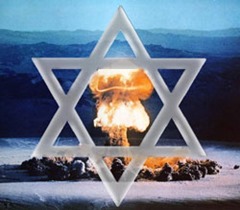 12. The Samson Option
12. The Samson Option
Date/Time: 10th October, 1973 / 11:00:00 Zulu
Location: Egypt – Sinai Peninsula
Playable Sides: Israel
Duration: 4 Hours
Officially, Israel is not a nuclear power.
During the first days of the Yom Kippur War, with the initial surprise breakthroughs on both the northern and southern borders by the combined Arab armies, Israel’s military was in near-panic. The alarmed Defence Minister Moshe Dayan told Israeli Prime Minister Golda Meir that “this is the end of the third temple.” He was warning of Israel’s impending total defeat, but “Temple” was also the code word for nuclear weapons.
Dayan again raised the nuclear topic in a cabinet meeting, warning that the country was approaching a point of “last resort”. The same night, Meir authorized the assembly of thirteen nuclear ‘physics packages’, to arm Jericho I missiles at Sdot Micha Airbase (aka “Second Wing”), and F-4E aircraft at Tel Nof Airbase (aka “Black Squadron”), for use against Syrian and Egyptian targets. They would be used if absolutely necessary to prevent total collapse at the front lines, or as the final retaliation for Israel’s destruction. However, the preparations were deliberately performed in an easily observable manner, likely as a signal to the US and USSR.
US Secretary of State Henry Kissinger learned of the nuclear alert on the morning of October 9. That day, in keeping with his deal and warning which prevented a pre-emptive Israeli attack on the massing Arab armies, US President Nixon ordered the commencement of Operation Nickel Grass, a massive airlift operation to replace all of Israel’s material losses (especially its aircraft) and provide additional support hardware such as brand-new electronic jammers to defeat Arab SAMs. (According to anecdotal evidence, Kissinger told Sadat that the reason for the US airlift was that the Israelis were very close to “going nuclear”.)
In this hypothetical scenario, the US took too long to commit to providing the vital assistance, and Israel’s leadership became desperate enough to step into the nuclear abyss.
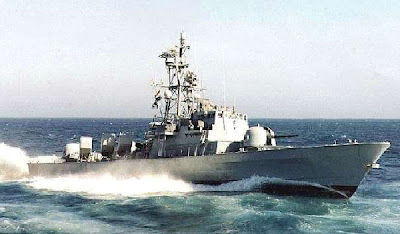 13. Seconds Out – Round Two!
13. Seconds Out – Round Two!
Syria vs. Israel
Date/Time: 11th October, 1973 / 21:00:00 Zulu
Location: Eastern Med – Port of Latakia
Playable Sides: Israel
Duration: 5 Hours
The Second Battle of Latakia was another small naval battle of the Yom Kippur War, fought between Israel and Syria on October 11. Israel’s 914 Division fielded Sa’ar missile boats armed with Gabriel anti-ship missiles, while the Syrian Navy were equipped with Soviet Komar- and Osa-class missile boats armed with Soviet-manufactured SS-N-2 “Styx” anti-ship missiles.
After losing 3 missile boats during the first Battle of Latakia, the Syrian navy changed its tactics and refused to engage the Israeli navy in open battle at sea again. Instead, it used its missile boats on short “dash in and out” forays from harbour mouths to launch missiles, relying on coastal batteries for defence. To provoke the missile boats into open combat, the commander of the Israeli Navy missile boats flotilla, Michael Barkai, was dispatched with 7 boats to launch a night attack on the Syrian ports. Oil tanks at the ports were marked as secondary targets.
Barkai split his forces so that 2 Sa’ar 4-class missile boats were to attack the Port of Banias, while another 2 boats would attack the Syrian naval base at Mina Al-Baida. The last 3 remaining boats, 2 Sa’ar 3-class missile boats and 1 Sa’ar 2-class boat were to attack Latakia again.
Both sides had already learned lessons from the previous battles at Latakia and Baltim, and would now put their new tricks to the test.
Next: From Yom Kippur to Bekaa
Companion to Shifting Sands: The v1.13 update in a nutshell
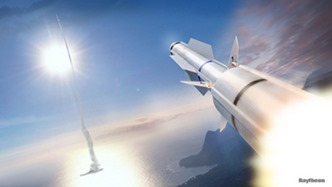 Earlier today, the v1.13 update to Command was “unofficially pre-released” on the MatrixGames forums ahead of its official October 19 release. This update accompanies the Shifting Sands standalone expansion and will also be freely available to existing CMANO users.
Earlier today, the v1.13 update to Command was “unofficially pre-released” on the MatrixGames forums ahead of its official October 19 release. This update accompanies the Shifting Sands standalone expansion and will also be freely available to existing CMANO users.
Following the release of v1.12 and Chains of War, with their ground-breaking gameplay features (communications disruption, aircraft damage , the new weapon types and cargo, amphibious and airdrop ops), v1.13 returns to the more traditional “a thousand little things” form. That said, there are still a few stand-out items worth mentioning.
- As in every past update, a major development focus is on simulation performance. Large, complex scenarios should now run even faster on the same available hardware.
- The pan/zoom operations on the map have been given a major boost (or conversely, if you are having a lag issue this should now be significantly eased). Map icons are now also significantly “sharper”, for lack of a better term.
- Tactical chaff laying is now available, allowing players to create chaff corridors to protect their offensive packages as in historical raids in WW2, the Middle East, Vietnam etc. The advantages as well as limitations of chaff corridors (and the technological reasons that gradually led to their obsolescence from the late 1970s) are faithfully modelled.
- Sprint & drift behavior is now also available for single, non-grouped units.
- AAW & ABM engagement mechanics have received a major overhaul. Various nuances have been added to the aircraft damage model, generally increasing lethality against large aircraft, conferring significant lethality bonuses to late-generation weapons (here is an example of how modern AAW weapons are scarily smart about optimizing their destructive effects), and properly rewarding hit-to-kill warheads. Numerous AAW/ABM weapons have had their max-target speed values adjusted so that they are realistically less capable at rising-speed targets (e.g. RVs), and the intercept aspect angle is also taken into account (a fully “crossing shot” can reduce the nominal PH by up to 50%).
- An all-new Lua console is introduced, offering a substantially better editing experience and functionality. The Lua API has also received myriads of improvements, additions and fixes (as always, the online reference is the best resource).
The development team is already gearing up for the next game-engine update, which will match the release of the next Command-LIVE scenario. Stay tuned!





